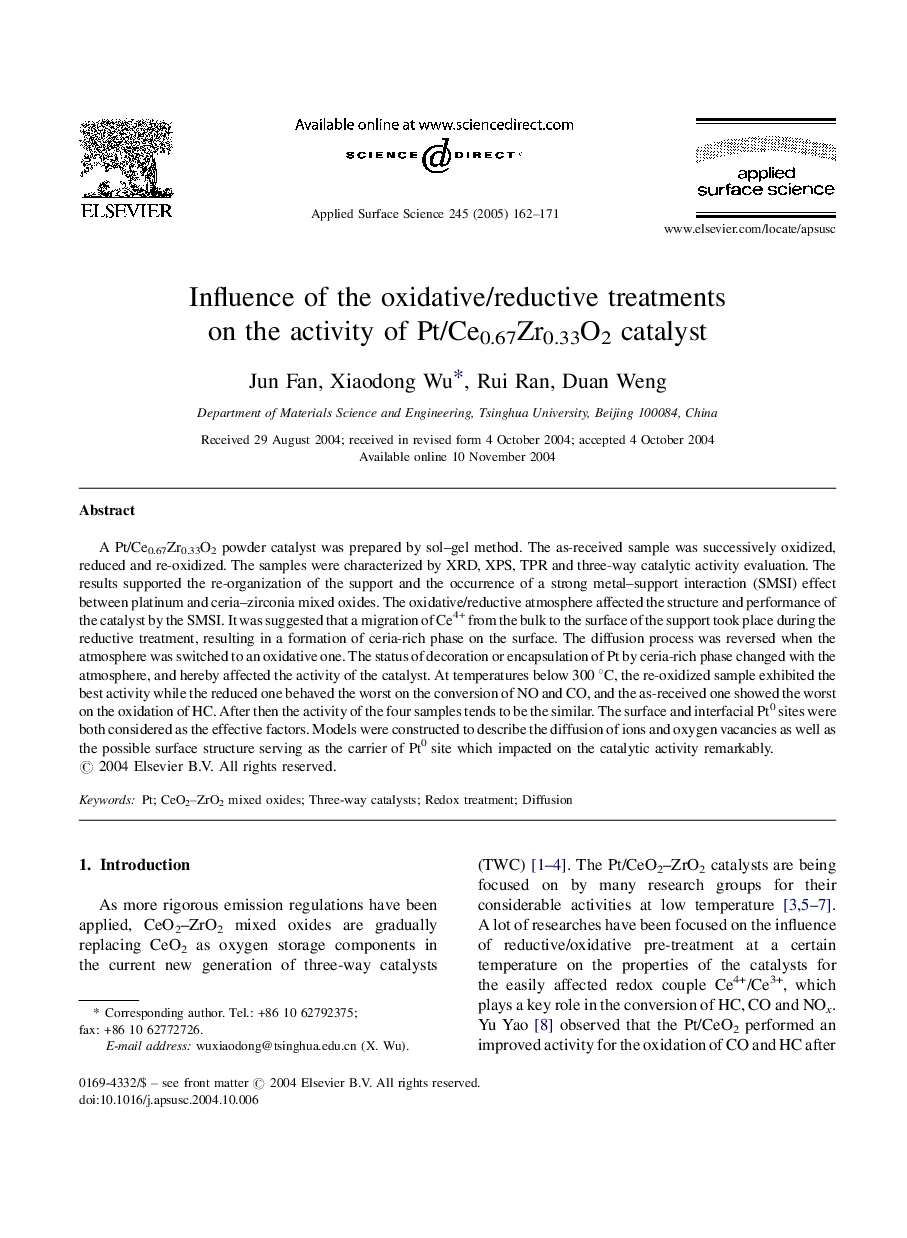| Article ID | Journal | Published Year | Pages | File Type |
|---|---|---|---|---|
| 9566795 | Applied Surface Science | 2005 | 10 Pages |
Abstract
A Pt/Ce0.67Zr0.33O2 powder catalyst was prepared by sol-gel method. The as-received sample was successively oxidized, reduced and re-oxidized. The samples were characterized by XRD, XPS, TPR and three-way catalytic activity evaluation. The results supported the re-organization of the support and the occurrence of a strong metal-support interaction (SMSI) effect between platinum and ceria-zirconia mixed oxides. The oxidative/reductive atmosphere affected the structure and performance of the catalyst by the SMSI. It was suggested that a migration of Ce4+ from the bulk to the surface of the support took place during the reductive treatment, resulting in a formation of ceria-rich phase on the surface. The diffusion process was reversed when the atmosphere was switched to an oxidative one. The status of decoration or encapsulation of Pt by ceria-rich phase changed with the atmosphere, and hereby affected the activity of the catalyst. At temperatures below 300 °C, the re-oxidized sample exhibited the best activity while the reduced one behaved the worst on the conversion of NO and CO, and the as-received one showed the worst on the oxidation of HC. After then the activity of the four samples tends to be the similar. The surface and interfacial Pt0 sites were both considered as the effective factors. Models were constructed to describe the diffusion of ions and oxygen vacancies as well as the possible surface structure serving as the carrier of Pt0 site which impacted on the catalytic activity remarkably.
Related Topics
Physical Sciences and Engineering
Chemistry
Physical and Theoretical Chemistry
Authors
Jun Fan, Xiaodong Wu, Rui Ran, Duan Weng,
